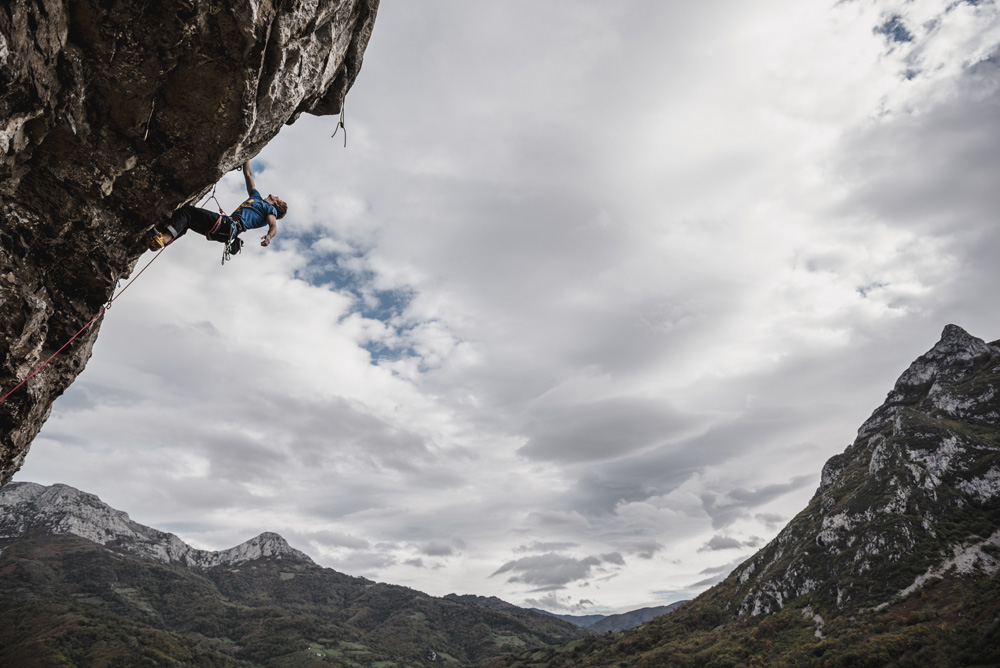My memories of Asturias are strong: long, sandy surf beaches populated by locals; rolling green hills not ten miles from the coast; wide open, quiet countryside with a ruralness reminiscent of quieter parts of Provence; drinking strong cider in cider-bars in quiet country towns. And being on the wrong route on a fabulous sport crag.
Asturias is the coastal province on the northern coast of Spain. Think ‘left of France’. It’s a big holiday destination for French and Spaniards, although little known outside these two countries. While this may be true from a tourism point of view, it’s an undisputable fact when it comes to climbing. Well perhaps this is about to change.
Roca Verde is a new guidebook from British ex-pat Richie Patterson. Richie has been living and climbing in the region now for eight years and has dedicated the past few to bringing information on the local crags together into one volume. As is often the way in Spain, some of these crags were covered in small, area specific guides, and some never recorded before. The result is a book which throws a whole new climbing destination onto the table for rock-hungry Spainophiles to get their teeth in to.

It looks amazing. The action shots reveal the blockbusting quality limestone that we have come to demand of Spain – steep walls, overhangs, tufas, orange-and-blue streaks – these are all in evidence here. The routes look cool and well featured and the photos – mostly Richie’s own – make me want to be there. I must point out one thing here: the author has allowed himself the indulgence of putting an okay shot of himself on the front cover, something that hasn’t happened since Andy Pollitt’s day. But we’ll overlook that for now.
One thing that turns me on about the photos is the background. There’s more green around than we have come to expect from Spanish climbing settings. Trees and grass attest to the area’s higher rainfall when compared to the Costa Blanca, but all that dust down on the east side does my head in after a while. I’ll take the odd shower, especially since there are plenty of crags in this book that are weatherproof.
There’s a huge amount of rock in these pages. As well as Asturias it covers the neighbouring regions of Cantabria and León combining to nearly 3,000 routes from 2s and 3s right up to tediously-hard 9as. It seems best, in general, in spring and autumn, although lots of the crags I looked at were goers in summer and winter too.

The book itself seems to work very well. It is functional, fact and number heavy, as is the way with continental sport guides. Maps aren’t beautiful, but who cares. Out of curiosity I picked a few at random and compared them to Google Earth and they all seemed spot on. Scales would be handy, all the same. Topos are excellent, taken in great light, and serve to showcase crags really well.
One last point I had to broach with the author, was what relationship Richie had with locals. To my relief it turned out to be a constructive one. Locals were a big help and in the production and have received the guide well, perhaps helped by the fact that Richie actually lives there. This impression is helped by the fact that, going by the names at least, the people in the action photos are locals. In addition to this, Richie has pledged 10% of any profits from the book towards local bolt funds. I imagine that goes a long way to making locals happy.
So, there you have it. A new guide to a new area. Go there. Can I have my twenty quid now Richie?
